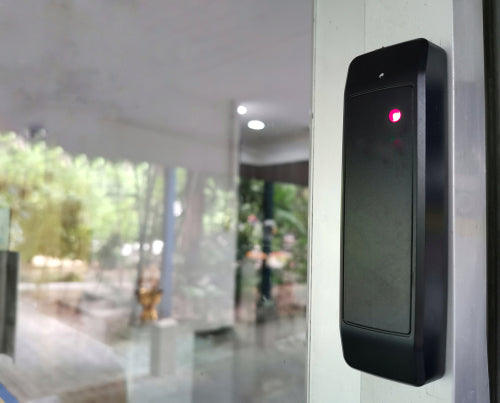No Products in the Cart

Apartment buildings are a hub of many different residents, bustling with activity and requiring efficient security measures to ensure the safety and well-being of its occupants. In this modern age, traditional lock and key systems are gradually being replaced by more advanced solutions, such as access control systems. As such, many different types of access control technologies (e.g., proximity cards, key fobs, adhesive tags, and even proximity rings) have been developed to fill the need for more modern security systems. Chief among these technologies, access control wristbands have emerged as a revolutionary tool to streamline security, enhance convenience, and provide numerous benefits to both residents and building management. This article explores the significance of access control systems in apartment buildings, highlighting how access control wristbands play a pivotal role in meeting the evolving security demands of the 21st century.
Access control systems are modern and sophisticated ways to secure entry to any private or otherwise restricted building or room—be it an apartment building, an office, a personal residence, a storage room, etc. Basic access control security systems involve securing a door with an electronic lock connected to a proximity reader. That’s where the access control wristbands come in: Authorized users simply place their wristband near the reader, which then unlocks the door (assuming that the user’s credentials meet the security standards of the access control system). This should all sound familiar to most people; Hotels use access control systems on their rooms (although usually with cards instead of wristbands) almost ubiquitously. The apartment complex industry still has some catching-up to do in this regard, however.
One of the primary reasons apartment buildings require access control systems is to ensure enhanced security. With traditional keys, unauthorized access and key duplication are significant concerns. It is relatively easy to pick a traditional deadbolt lock, but nearly impossible to bypass the security measures on modern-day access control systems. Moreover, while anyone can take a key to the local department store and make copies of it, copying the digital security information stored on access control wristbands, on the other hand, is exceedingly more difficult. These wristbands utilize a sophisticated technology known as Radio Frequency Identification (RFID), and often incorporate features like encrypted data transmission, tamper-proof materials, and personalized authentication, making it extremely difficult for intruders to gain unauthorized entry.
Therefore, access control systems working in tandem with access control wristbands provide a robust and technologically advanced method of delivering dependable security while avoiding the risks of traditional lock-and-key methods. If you haven’t started using an access control system in your apartment building yet, then you’re doing it wrong!
Not only are they incredibly secure, but access control wristbands also offer a multitude of convenience benefits to residents. With these wristbands, residents no longer need to carry a set of bulky keys, which can easily be misplaced or forgotten. Wristbands are lightweight, waterproof, and comfortable to wear, making them a hassle-free alternative. Additionally, access control systems equipped with wristbands enable residents to unlock doors, elevators, and common areas with a simple tap. This eliminates the need to fumble through pockets or bags, providing a seamless experience that aligns with the fast-paced modern lifestyle.
Access control wristbands are not only more practical for the residents, but they are especially helpful for the building administrators. In bustling apartment buildings, managing access for a large number of residents, staff, and visitors can be a logistical nightmare without an efficient system in place. Access control wristbands simplify access management by providing a centralized platform for administrators to monitor and control access permissions effortlessly.
Since each user is assigned a wristband with unique credentials linked to their identity with personalized access privileges, landlords and property managers can easily monitor the use of the apartment building and its facilities. Furthermore, these access control wristbands can be easily programmed to grant or revoke access privileges remotely from a single, secure computer, enabling building management to respond quickly to changes such as move-ins, move-outs, or temporary access requirements. As such, unlike physical keys, which can be lost or misplaced, access control wristbands can be remotely deactivated, ensuring that lost or stolen bands become immediately invalid, thereby eliminating the risk of unauthorized entry.
Effective visitor management is essential for apartment buildings to maintain a secure environment. In addition to the plethora of benefits already mentioned, access control wristbands also enable building management to facilitate visitor access while ensuring that only authorized guests enter the premises. Visitors can be issued temporary wristbands that grant them access to designated areas for a specific time frame, giving them a seamless experience while providing peace of mind to residents. In this regard, access control wristbands are once again a far superior alternative to physical keys that can easily be stolen or copied—in which case the landlord or property management would then have to waste resources in order to rekey the applicable lock(s).